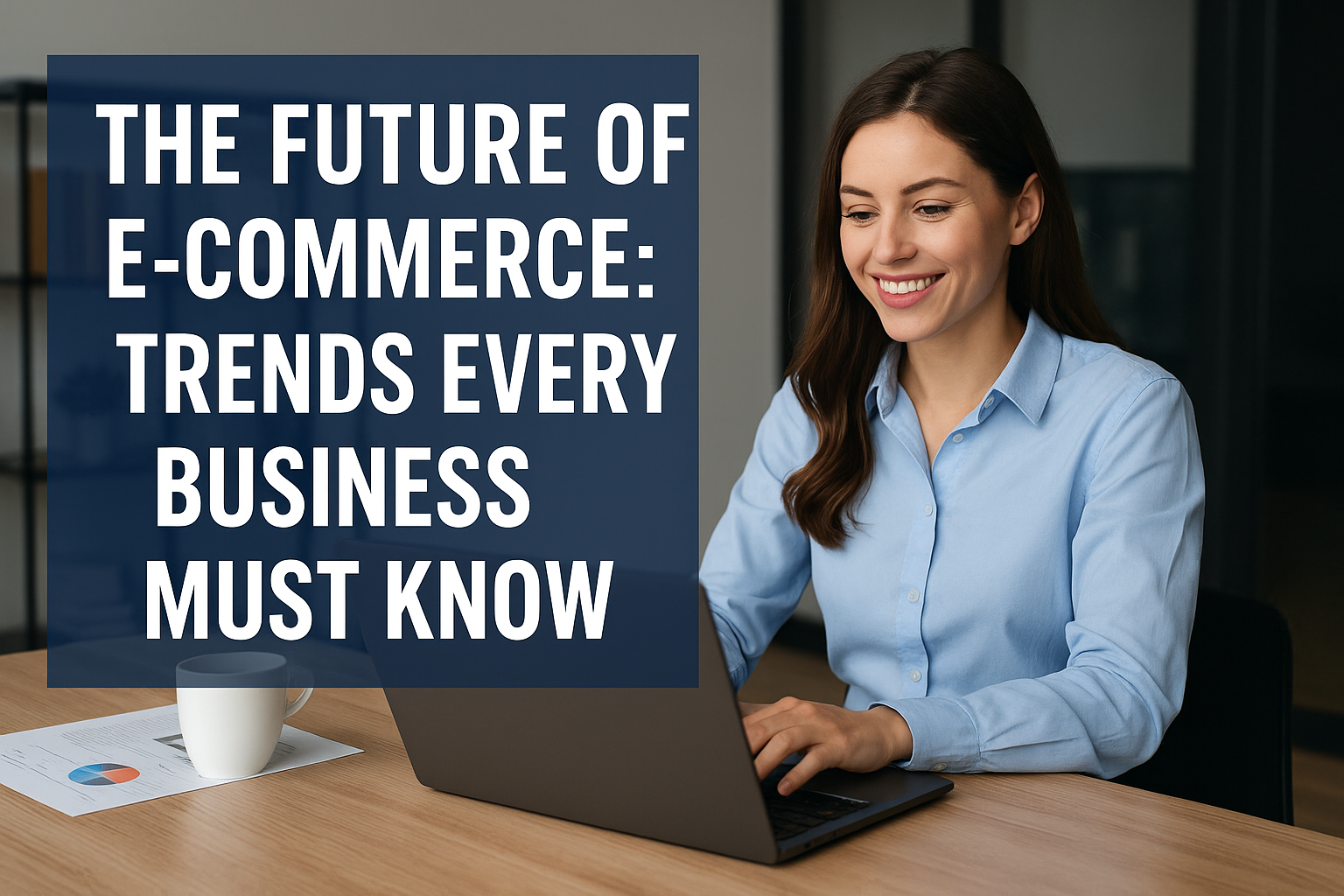

The Future of E-Commerce: Trends Every Business Must Know
E-commerce has transformed from a convenient option to the backbone of modern retail. In 2025, online shopping is no longer limited to buying clothes, electronics, or groceries — it has expanded into experiences, services, and even virtual goods. With the global e-commerce market expected to surpass $8 trillion by 2027, businesses must adapt quickly or risk being left behind. This article explores the most significant trends shaping the future of e-commerce and how companies can take advantage of them.
1. The Growth of Mobile Commerce
Mobile devices have become the primary shopping tool for millions of users worldwide. From browsing to payment, smartphones simplify every stage of the customer journey.
Stat: Over 70% of global e-commerce traffic now comes from mobile devices.
Opportunity for businesses: Optimize websites and apps for mobile-first experiences, with responsive designs and one-click checkout.
2. Personalization Through AI
Artificial intelligence (AI) is helping businesses deliver highly personalized shopping experiences. Recommendation engines, dynamic pricing, and AI-driven chatbots ensure that customers get exactly what they want, when they want it.
Personalized product suggestions increase conversion rates.
Chatbots reduce customer service costs while improving satisfaction.
3. Voice Commerce is Rising
With the popularity of smart speakers like Amazon Alexa and Google Assistant, voice commerce is growing rapidly. Customers are now comfortable ordering products with simple voice commands.
Example: Ordering groceries by saying, “Alexa, add milk to my cart.”
Businesses need to optimize product listings for voice search keywords.
4. Augmented Reality (AR) Shopping
AR allows customers to visualize products in their own environment before purchase. Fashion retailers let users “try on” outfits virtually, while furniture stores allow shoppers to place 3D models of sofas in their living room.
This reduces return rates and boosts buyer confidence.
AR is expected to become a standard feature in online stores.
5. Sustainable and Ethical E-Commerce
Modern shoppers are increasingly concerned about sustainability. They want eco-friendly packaging, ethically sourced products, and companies that care about the planet.
Brands that focus on transparency build stronger customer loyalty.
Expect more “green certifications” and carbon-neutral deliveries.
6. The Role of Social Commerce
Social media platforms like Instagram, TikTok, and Facebook have evolved into powerful e-commerce tools. Shoppable posts, live-stream shopping events, and influencer marketing are now essential.
Customers are buying directly from social platforms without visiting websites.
Businesses should leverage micro-influencers for targeted engagement.
7. Faster and Smarter Deliveries
Logistics innovation is another game-changer. Same-day delivery, drone shipments, and AI-powered route optimization are becoming common. Customers expect speed, and businesses that can deliver quickly gain an edge.
Amazon has set the benchmark with its Prime delivery model.
Small businesses are partnering with logistics startups to compete.
8. Subscription-Based Models
Subscription services are reshaping customer loyalty. From fashion boxes to meal kits, customers appreciate the convenience and exclusivity of curated products.
Predictable revenue streams help businesses manage growth.
Personalized subscription experiences drive retention.
9. Integration of Cryptocurrency and Digital Wallets
Digital payments are expanding beyond credit cards. Wallets like PayPal, Apple Pay, and Google Pay are standard, while cryptocurrency payments are slowly gaining acceptance.
Businesses targeting younger, tech-savvy audiences must consider crypto-friendly payment gateways.
10. Global Expansion and Cross-Border Shopping
The internet has erased geographical barriers. Customers are buying products from around the globe, and platforms like Shopify, Amazon, and AliExpress are making international sales simple.
Multi-language websites and local currency pricing increase global reach.
Businesses must also navigate shipping regulations and taxes.
Forbes on Future of E-Commerce
Conclusion
The future of e-commerce is exciting, fast-paced, and full of opportunities. Businesses that embrace AI, AR, voice commerce, and sustainability will stand out in a competitive marketplace. Whether you are a small startup or a global enterprise, adapting to these trends is no longer optional — it’s essential for survival and growth.
Key Takeaway: The businesses that will thrive in the future are those that combine technology, personalization, and customer trust to create seamless shopping experiences.













